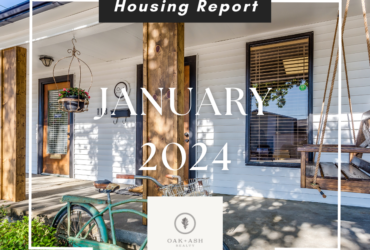
Industry News
Comparative Market Analysis (CMA)
Did you know that the process that a real estate agent uses to estimate value for a property is called a Comparative Market Analysis (CMA)? A CMA is an evaluation of a home or property’s value based on similar, recently sold comparable properties known shorthand as comps in the same neighborhood or area. Similar to an appraisal, a comparative market analysis is not exactly the same as an appraisal which is performed by a licensed appraiser but has a lot of similarities.
What is a CMA used by a real estate agent for?
The number one reason a CMA is performed by a real estate agent is to establish value for listing a property for sale. When it comes time to list a property for sale, an agent will perform a CMA to provide guidance to the seller on the amount the property should be listed for and potentially sold for.
Real estate agents also perform CMAs to estimate value for a buyer. When buying a piece of property or a home it is important for the buyer to have an idea of what the property is worth regardless of the listing price to help them make an informed decision.
Another reason real estate agent’s perform CMAs is to provide comps for individuals who wish to protest their tax assessment. Each year the local taxing authority will assess the value of each property within the county and adjust the value accordingly. If the assessment entails an increase, then each property owner can protest their increase by providing “comps” that can come from a CMA prepared by a real estate agent.
What goes into a CMA?
- Location: The best sold comps will be located in the same neighborhood as the subject property, or area if outside the city limits. However, if there haven’t been enough recent sales in the area to complete the CMA, the agent will select comps located in an area that is considered similar due to the quality of local schools, crime rate, noise level, proximity to amenities and so on.
- Lot/ Acreage Size: The size of a property’s lot plays a large role in its market value. Differences in even half an acre can have a substantial impact on a home’s price.
- Square Footage: The larger the house, the more valuable it tends to be. Therefore, the extent of livable square footage can be just as important as the number of rooms within the home.
- Age and Condition of Property: The year the house was built and whether it’s been recently renovated factors into the value. Newer constructions and homes built with high-end materials are often considered more valuable, though historical homes that have been recently updated can also have high purchasing prices.
- Number of Bedrooms and Bathrooms: The more bedrooms and bathrooms a home has, the higher its value will be.
- Special Features: Specialty features, like fireplaces, patios, swimming pools, garages and so on are also taken into consideration. However, it’s important to keep in mind that depending on the local market, not all special features will actually be viewed as increasing the property’s value.
- Date of Sale: The comps chosen should have sold within the last 3 – 6 months. If sale dates are not current, sales prices must be adjusted to reflect how the market has changed. Market conditions may vacillate either locally or nationally based on the size of inventory and changing interest rates.
- Terms of Financing and Sale: The type of financing a buyer uses to purchase a home can impact the purchasing price, as can the terms of sale. Buyer contingencies might be accepted, but only if the offer price is higher. If a comp’s sale included seller concessions, the value of the concessions must be subtracted from its purchasing price. Such concessions may consist of the seller’s decision to pay the buyer’s closing costs or make repairs on the home prior to sale.











